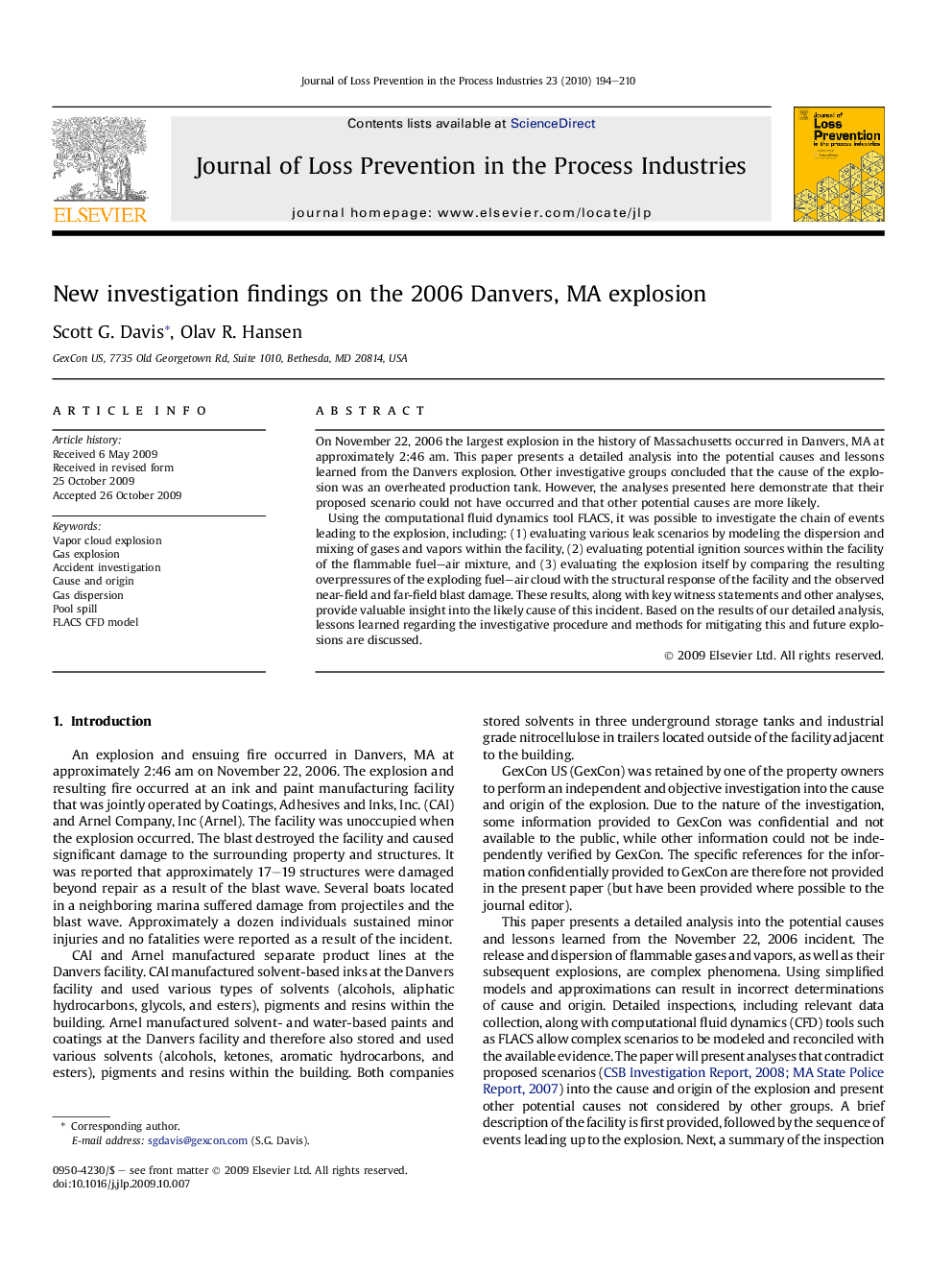| Article ID | Journal | Published Year | Pages | File Type |
|---|---|---|---|---|
| 586710 | Journal of Loss Prevention in the Process Industries | 2010 | 17 Pages |
On November 22, 2006 the largest explosion in the history of Massachusetts occurred in Danvers, MA at approximately 2:46 am. This paper presents a detailed analysis into the potential causes and lessons learned from the Danvers explosion. Other investigative groups concluded that the cause of the explosion was an overheated production tank. However, the analyses presented here demonstrate that their proposed scenario could not have occurred and that other potential causes are more likely.Using the computational fluid dynamics tool FLACS, it was possible to investigate the chain of events leading to the explosion, including: (1) evaluating various leak scenarios by modeling the dispersion and mixing of gases and vapors within the facility, (2) evaluating potential ignition sources within the facility of the flammable fuel–air mixture, and (3) evaluating the explosion itself by comparing the resulting overpressures of the exploding fuel–air cloud with the structural response of the facility and the observed near-field and far-field blast damage. These results, along with key witness statements and other analyses, provide valuable insight into the likely cause of this incident. Based on the results of our detailed analysis, lessons learned regarding the investigative procedure and methods for mitigating this and future explosions are discussed.
